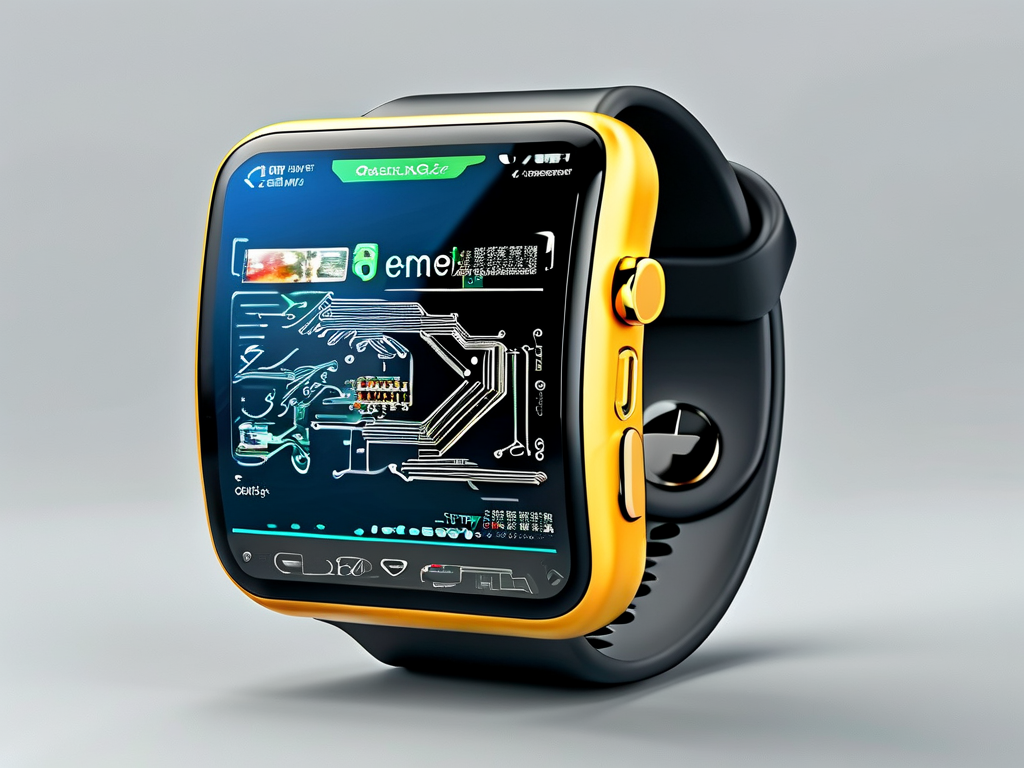The convergence of embedded systems and wearable technology has revolutionized how we interact with devices, with smartwatches standing at the forefront of this innovation. Modern telephone-enabled smartwatches represent a marvel of miniaturized engineering, combining cellular connectivity, health monitoring, and intuitive interfaces within a compact form factor. This article explores the technical challenges and breakthroughs in embedded development for these devices, offering insights into their architecture and future potential.

Hardware Constraints and Optimization
At the core of every smartwatch lies a System-on-Chip (SoC) designed for extreme efficiency. Unlike smartphones, these devices operate within strict power and space limitations. For instance, the Qualcomm Snapdragon Wear 4100+ platform integrates a 1.7GHz quad-core CPU, Adreno 504 GPU, and LTE modem into a package smaller than a postage stamp. Developers must balance performance with thermal management, often implementing dynamic clock scaling:
// Example of dynamic frequency adjustment
void adjust_cpu_frequency(BatteryStatus status) {
if (status == BATTERY_LOW) {
set_cpu_clock(800MHz); // Power-saving mode
} else {
set_cpu_clock(1.7GHz); // Full performance
}
}
This code snippet illustrates how runtime decisions optimize power consumption—a critical consideration when dealing with batteries typically ranging from 300mAh to 500mAh.
Real-Time Operating Systems (RTOS)
Smartwatches rely on RTOS variants like FreeRTOS or Zephyr OS to manage multitasking while maintaining responsiveness. These systems prioritize time-sensitive operations like call handling and sensor data processing. A typical smartwatch OS manages over 15 concurrent threads for:
- Cellular communication (LTE/5G)
- Bluetooth Low Energy (BLE) pairing
- Health sensor polling (heart rate, SpO2)
- Touch input processing
- Over-the-air (OTA) update management
Memory management becomes particularly challenging in this environment. Developers often employ memory pooling techniques to avoid fragmentation, with most devices allocating strict partitions:
- 256KB–512KB for system tasks
- 1MB–2MB for application logic
- Dedicated buffers for wireless protocols
Sensor Fusion Challenges
Modern smartwatches incorporate up to 12 environmental and biometric sensors. Accelerometers, gyroscopes, and PPG (photoplethysmography) sensors work in tandem to track activities and vital signs. Sensor fusion algorithms must compensate for motion artifacts—a significant hurdle during intense physical activities. Kalman filters and machine learning models process raw data to improve accuracy:
# Simplified sensor fusion example
def process_heart_rate(ppg_data, motion_data):
motion_compensated = apply_kalman_filter(ppg_data, motion_data)
if detect_artifacts(motion_compensated):
return interpolate_values(motion_compensated)
return calculate_bpm(motion_compensated)
Communication Protocols
Supporting voice calls on wrist-worn devices requires sophisticated audio processing. Beamforming microphone arrays and bone conduction speakers overcome ambient noise challenges. The integration of VoLTE (Voice over LTE) ensures call quality, while BLE 5.3 handles short-range connectivity with smartphones. Developers must navigate complex certification processes for radio frequency compliance across multiple regions.
Future Directions
Emerging technologies are pushing smartwatch capabilities further:
- Edge AI Processing: On-device ML models for fall detection and arrhythmia prediction
- Energy Harvesting: Solar charging and kinetic energy recovery systems
- Sub-6GHz 5G: Enabling standalone smartwatch connectivity without phone pairing
A recent study by ABI Research predicts that by 2027, 45% of smartwatches will incorporate embedded SIM (eSIM) technology, further cementing their role as independent communication devices.
Development Best Practices
Successful smartwatch firmware requires:
- Rigorous power profiling using tools like Joulescope
- Continuous integration testing with hardware-in-the-loop (HIL) setups
- Compliance with IEC 62304 for medical-grade health features
- Secure boot implementations to protect user data
As consumer expectations grow, embedded developers face the dual challenge of adding features while maintaining week-long battery life—a balancing act that continues to drive innovation in low-power circuit design and energy-aware software architectures.
In , embedded development for telephony-enabled smartwatches represents one of the most demanding yet rewarding fields in consumer electronics. By overcoming size, power, and performance constraints, engineers are creating devices that redefine mobile communication—all from the convenience of our wrists.









